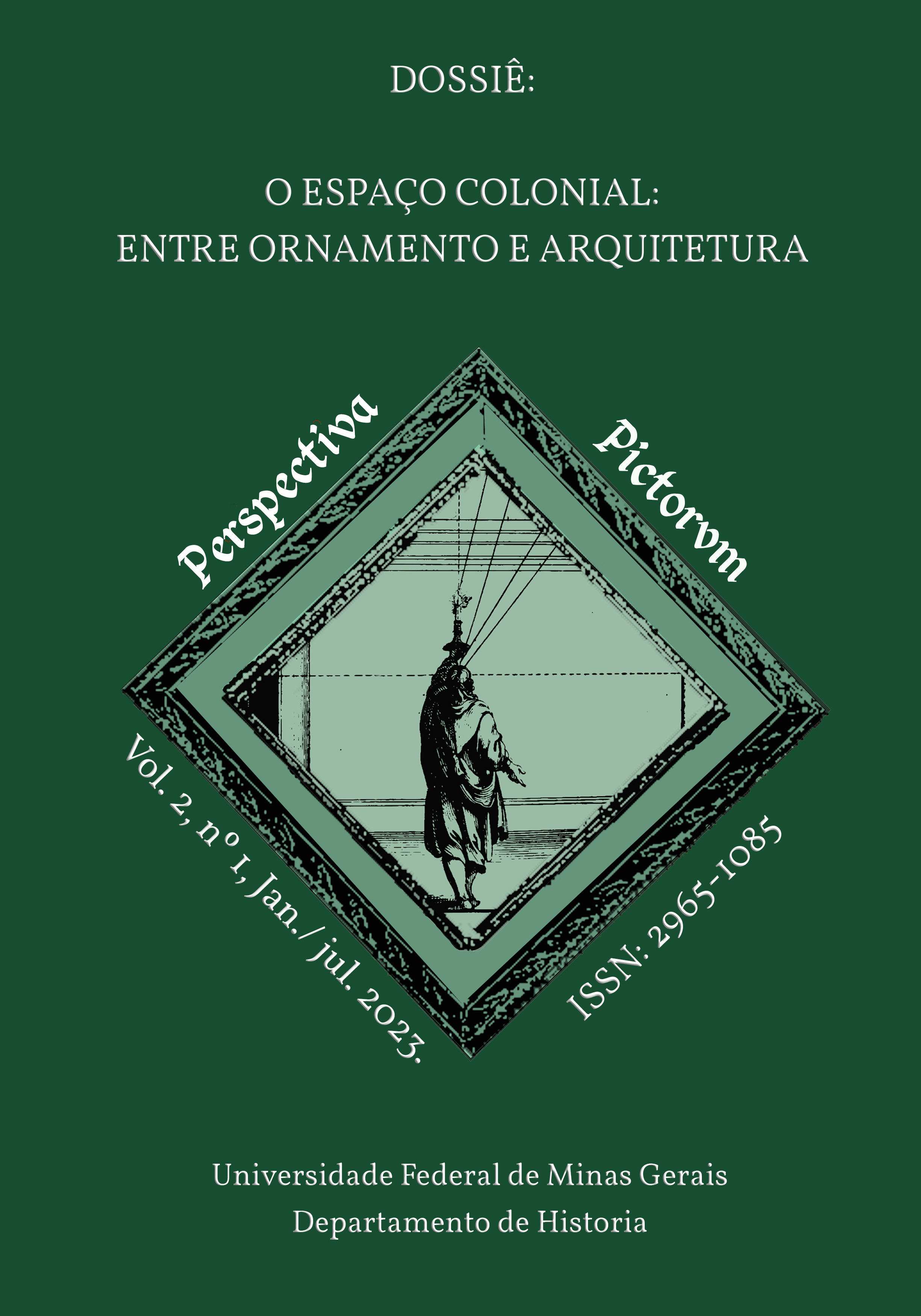Pensar o efêmero – entre a quadratura e as especulações teóricas nas discussões em Santo Antão sob o comando de Inácio Vieira S.J.
Published 2023-07-10
How to Cite
Copyright (c) 2023 Magno Moraes Mello

This work is licensed under a Creative Commons Attribution-NonCommercial 4.0 International License.
Abstract
The aim of this study is to discuss the Mathematics Lectures at Colégio de Santo Antão (Lisbon) taught by the Jesuit priest Inácio Vieira, by focusing on two unpublished manuscripts currently in the National Library of Portugal, the Treaty on Optics (1714) and the Treaty on Perspective (1715). I regard these texts as the starting point of discussions on perspective painting and/or scenography in Lisbon. Vieira lectured from 1709 to 1721, when Florentine artist Vincenzo Bacherelli was in Lisbon (1701-1721). These two decorators systematically transformed pictorial practice in Portugal during the first half of the 18th century and were a lasting influence on perspective painting throughout that century. The above-mentioned treatises by Vieira are essential for a better understanding of perspective, scenography and, to a certain extent, quadratura in the reign of João V (1707-1750). This period is characterized by a new concept of space in the painted ceilings of Lisbon's temples and buildings. It is important to note that in 1615 another study on perspective had been published in Lisbon. This was the text by the Dominican Felipe Nunes, which appeared exactly a century before Vieira's manuscript. These are interesting questions that draw our attention to Vieira's pivotal role in the 18th century as a Mathematics lecturer. Painting and scenography were then at the forefront of theoretical discussions, artistic training, and the production of paintings of false architecture. The 1615 text was not didactic as regards perspective but highlighted it as a key form of pictorial representation in the figurative arts. It was necessary to wait for the contribution of the Jesuits and the range of texts written by Inácio Vieira, a mathematician who was also a scholar of Optics, Perspective and many other subjects, and who explored the practical dimensions of scenographic production in theatres or on ceilings. This study will present the contribution of Vieira’s Lectures and the relationship between his manuscripts and the pictorial practice in the quadratura genre.

